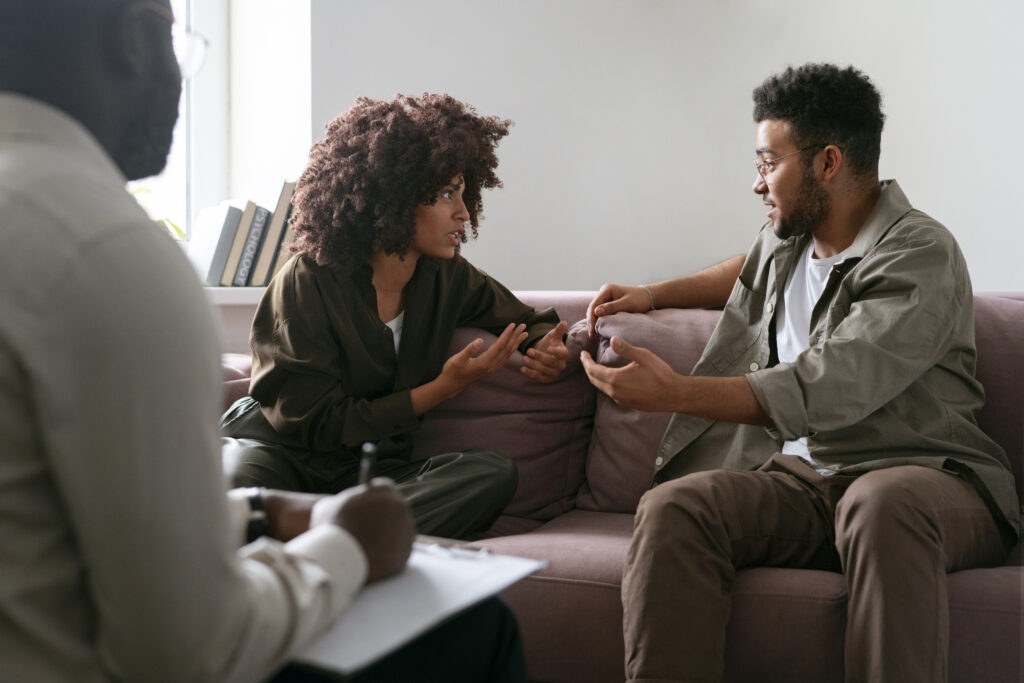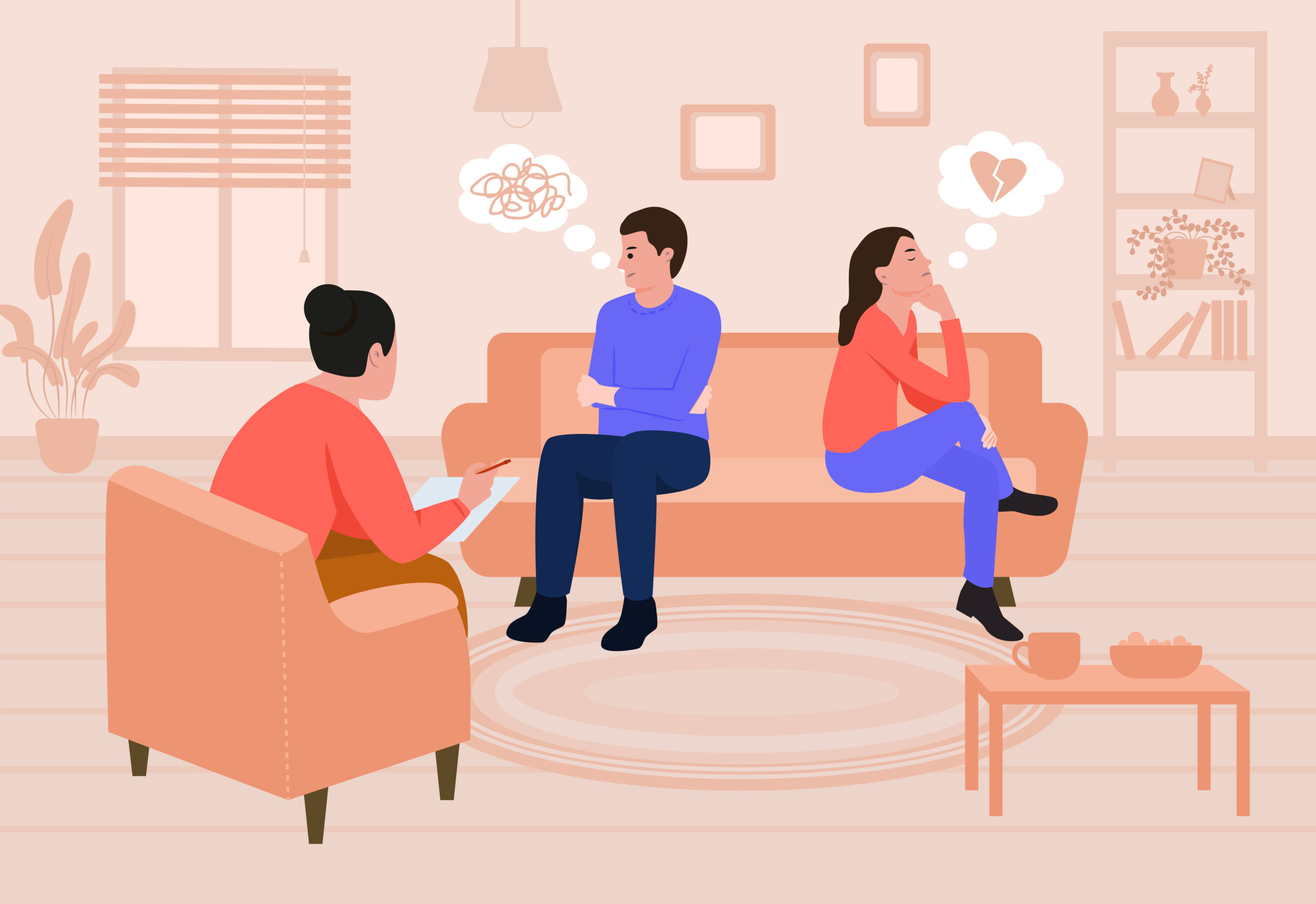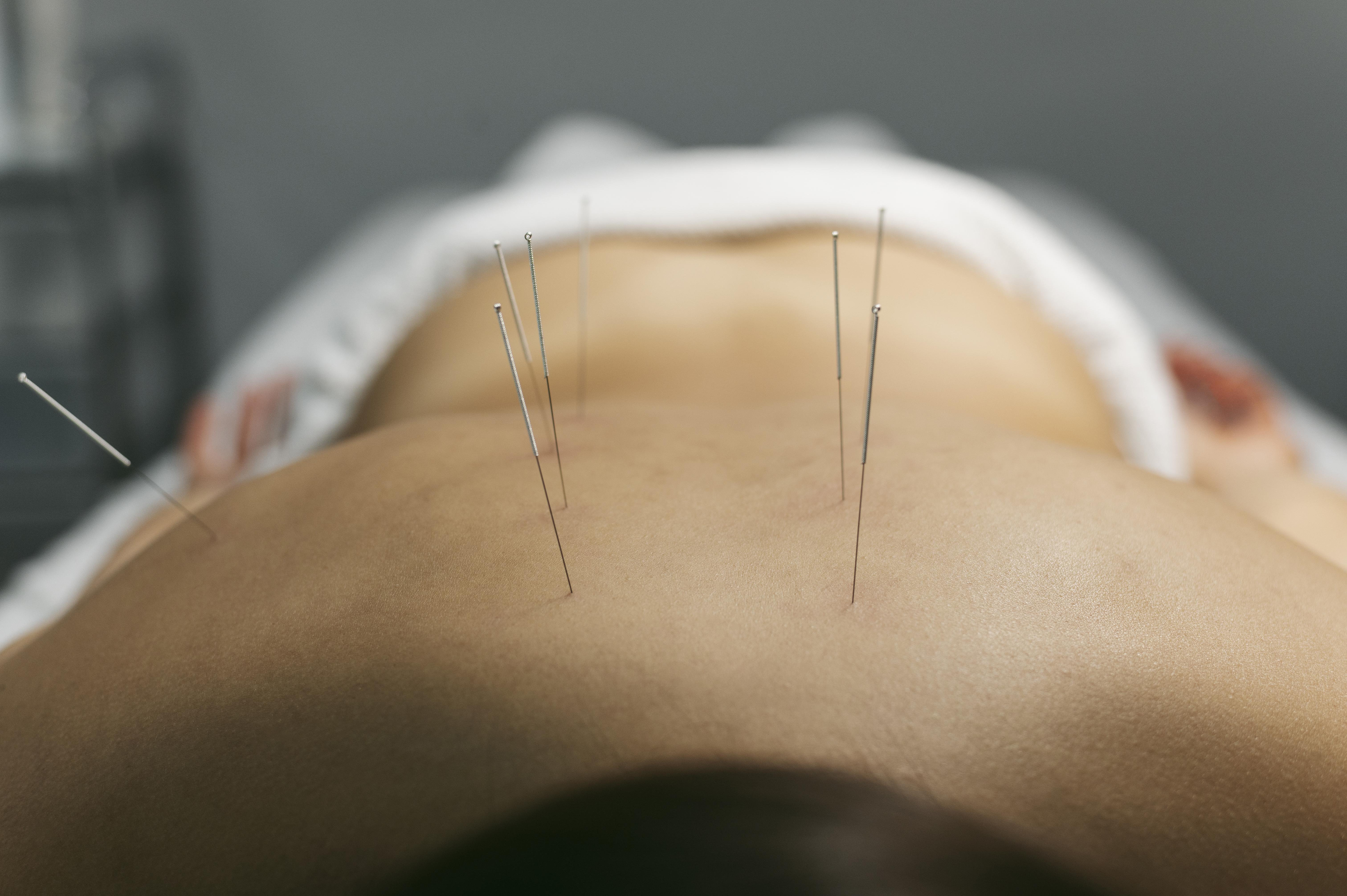In an era where relationships face unprecedented challenges—from digital distractions to evolving societal norms—couples counseling has emerged as a vital resource for partnerships of all kinds. Far from being a last resort for failing relationships, modern couples therapy offers proactive tools and evidence-based strategies that can strengthen even healthy relationships. This comprehensive guide explores the world of couples counseling, from fundamental approaches to finding the right therapist for your specific needs.
Understanding Couples Counseling Fundamentals
Couples counseling, also known as marriage therapy or relationship counseling, is a form of psychotherapy that helps couples recognize and resolve conflicts, improve communication patterns, and enhance their relationship satisfaction. Unlike individual therapy, couples counseling treats the relationship itself as the client, focusing on interactions and dynamics between partners rather than solely addressing individual issues.
Dr. John Gottman, renowned relationship researcher, notes that “couples wait an average of six years of being unhappy before getting help.” This delay often means that interventions come when relationship patterns have become deeply entrenched, making change more challenging but certainly not impossible.
The historical evolution of couples counseling reflects our growing understanding of healthy relationships. Early approaches often focused on individual psychodynamics, while contemporary methods emphasize relationship systems, attachment patterns, and communication processes. Modern couples therapy integrates neurobiological insights with psychological theories, recognizing how our brains and emotions interact during relationship conflicts.
A common misconception is that couples counseling is exclusively for relationships in crisis. In reality, many therapists report that preventative counseling—attending therapy before major problems develop—leads to the most satisfying outcomes. Research from the American Association of Marriage and Family Therapy indicates that 97% of surveyed clients received the help they sought from couples therapy, regardless of their starting point.

Major Therapeutic Approaches in Couples Counseling
Several evidence-based therapeutic approaches dominate the field of couples counseling, each with unique strengths:
Emotionally Focused Therapy (EFT), developed by Dr. Sue Johnson, focuses on attachment theory and emotional bonds. EFT helps couples identify negative interaction patterns and develop more secure emotional connections. Research shows 70-75% of couples move from distress to recovery using EFT, with 90% showing significant improvements.
The Gottman Method, created by Drs. John and Julie Gottman, is built on four decades of research with thousands of couples. This approach emphasizes building friendship, managing conflict constructively, and creating shared meaning. The Gottman Method is known for identifying specific predictors of divorce—what they call “The Four Horsemen”: criticism, contempt, defensiveness, and stonewalling.
Imago Relationship Therapy, developed by Harville Hendrix, Ph.D., and Helen LaKelly Hunt, Ph.D., explores how childhood experiences influence adult relationships. Imago therapy teaches structured dialogue techniques that transform conflicts into opportunities for healing and growth.
Cognitive Behavioral Therapy (CBT) for couples focuses on changing unhelpful thought patterns and behaviors that maintain relationship distress. CBT helps partners recognize how their interpretations of situations affect their emotional responses and relationship interactions.
Most modern therapists integrate multiple approaches, tailoring techniques to each couple’s specific needs rather than rigidly adhering to a single methodology.
Common Issues Addressed in Couples Counseling
Couples seek counseling for numerous concerns, but certain themes appear consistently across therapeutic settings:
Communication breakdowns rank among the most common problems couples face. Therapists help partners recognize destructive communication patterns, such as the demand-withdraw cycle, where one partner pursues conversation while the other retreats. Effective therapy transforms these patterns by teaching active listening, emotional validation, and constructive expression of needs.
Trust violations from infidelity to financial deception can shatter relationship foundations. Recovery typically involves creating transparency, understanding the context of the breach, expressing genuine remorse, and gradually rebuilding trust through consistent, trustworthy behavior. Research indicates that approximately 70% of couples remain together after addressing infidelity in therapy.
Intimacy and sexual concerns affect many couples, particularly in long-term relationships. Therapy addresses physical intimacy issues by examining underlying factors like stress, communication problems, past trauma, or physical health conditions. Therapists help couples discuss sexual needs openly and rediscover physical and emotional connection.
Financial conflicts often reflect deeper differences in values and priorities. Therapy helps couples understand their “money scripts”—unconscious beliefs about finances—and develop shared financial goals and management strategies that respect both partners’ needs.
Parenting disagreements strain many relationships. Co-parenting counseling helps parents develop consistent approaches, understand each other’s parenting philosophies, and present a united front while respecting different parenting strengths.
Life transitions such as career changes, empty nest syndrome, retirement, or health challenges require relationship adaptation. Therapy helps couples navigate these changes while maintaining connection and creating new relationship meaning.
The Couples Counseling Process
Understanding what to expect from couples counseling can ease anxiety about beginning the process:
The journey typically starts with an assessment phase, where the therapist gathers relationship history, identifies patterns, and helps establish goals. Some therapists use standardized assessments like the Gottman Relationship Checkup or the Dyadic Adjustment Scale to measure relationship functioning.
A standard session structure typically lasts 50-90 minutes, with some approaches (like Emotionally Focused Therapy) recommending 90-minute sessions to allow sufficient time for emotional processing. Weekly sessions are common initially, potentially decreasing in frequency as improvements solidify.
The duration of treatment varies significantly based on goals, issues, and approach. Brief interventions might involve 8-10 sessions focusing on specific challenges, while more comprehensive relationship rebuilding often takes 20-30 sessions over several months.
Most therapists assign between-session practice to reinforce skills and insights gained during therapy. These “homework” assignments might include communication exercises, shared positive activities, or individual reflection tasks.
Progress in couples counseling isn’t always linear. Many couples experience temporary setbacks or what therapists call “therapeutic impasses.” Skilled therapists help couples navigate these challenges by examining resistance and finding new approaches when needed.
Finding and Selecting the Right Therapist
The therapeutic relationship significantly impacts outcomes, making therapist selection crucial:
Professional qualifications matter significantly in couples’ work. Look for licensed marriage and family therapists (LMFTs), licensed professional counselors with couples specializations, psychologists with relationship expertise, or clinical social workers trained in couples modalities. Advanced certifications in specific approaches (like Certified Gottman Therapists or Certified EFT Therapists) indicate specialized training.
When interviewing potential therapists, ask about their approach to couples work, experience with your specific concerns, and how they handle therapeutic impasses. Many therapists offer brief consultations to assess fit before committing to regular sessions.
The therapeutic alliance—feeling understood and respected by your therapist—strongly predicts successful outcomes. Both partners should feel that the therapist maintains neutrality rather than taking sides, while still addressing problematic behaviors directly.
Financial considerations include insurance coverage (which varies widely for couples’ work), session fees ($100-250 per session is typical, with rates higher in metropolitan areas), and payment structures. Some therapists offer sliding scale fees based on income.
The pandemic accelerated the adoption of online couples therapy, which research shows can be as effective as in-person sessions for many couples while offering scheduling flexibility and eliminating transportation barriers.

Preparing for Couples Counseling Success
Approaching therapy with the right mindset significantly impacts outcomes:
Commitment to the process means prioritizing sessions, completing homework, and recognizing that meaningful change takes time. Research indicates that couples who attend sessions regularly and engage fully between sessions show the most improvement.
Managing expectations involves understanding that therapy isn’t about determining who’s “right” but rather creating new relationship patterns that work better for both partners. Success often comes gradually through consistent small changes rather than dramatic breakthroughs.
Initial discomfort is normal as couples address difficult topics and longstanding patterns. Therapists create emotional safety but cannot eliminate the vulnerability inherent in meaningful relationship work. This therapeutic discomfort typically decreases as couples develop new skills and experience positive changes.
Individual preparation might include reflecting on personal relationship goals, identifying patterns you’ve noticed, and considering your contribution to relationship dynamics. Coming prepared to discuss specific concerns helps sessions remain focused and productive.
Developing Skills Through Couples Counseling
Effective couples therapy helps partners develop specific skills that enhance relationship functioning:
Active listening techniques help partners truly understand each other rather than simply waiting to respond. Therapists teach reflective listening, where partners paraphrase what they’ve heard before responding, ensuring accurate understanding before moving forward.
Emotion regulation strategies help couples manage intense feelings during difficult conversations. These might include time-outs, self-soothing techniques, or mindfulness practices that prevent emotional flooding from derailing productive discussion.
Conflict resolution frameworks provide structure for addressing disagreements constructively. The Gottman Method, for example, teaches couples to soften conversation startups, accept influence from each other, and repair negative interactions quickly.
Attachment awareness helps partners understand how their early relationship experiences affect their current connection patterns. Recognizing whether you tend toward anxious, avoidant, or secure attachment styles helps explain reactions to relationship stress and guides growth toward a more secure connection.
Positive interaction building focuses on increasing the ratio of positive to negative exchanges. Relationship researcher John Gottman found that stable relationships maintain at least five positive interactions for every negative one, even during conflict.
Specialized Couples Counseling Situations
Certain relationship contexts benefit from tailored therapeutic approaches:
Premarital counseling helps couples proactively address potential conflict areas and build relationship skills before marriage. Research indicates that couples who complete structured premarital counseling have 30% higher marital satisfaction and lower divorce rates than those who don’t.
LGBTQ+ couples benefit from therapists who understand the unique stressors affecting these relationships, including minority stress, family of origin issues, and navigating societal prejudice. Affirming therapy approaches acknowledge these challenges while recognizing that same-sex relationships function similarly to heterosexual ones in many fundamental ways.
Multicultural and interfaith couples face unique challenges around integrating different cultural traditions, religious practices, and family expectations. Culturally sensitive therapy helps couples navigate these differences while building shared values and traditions.
Non-traditional relationship structures like polyamory or open relationships benefit from therapists experienced in consensual non-monogamy who can help establish boundaries, communication protocols, and emotional management strategies specific to these relationship formats.
Discernment counseling, developed by Dr. Bill Doherty, specializes in helping “mixed-agenda” couples where one partner is considering ending the relationship while the other wants to preserve it. This specialized approach helps couples make well-considered decisions about their relationship future rather than impulsively separating or remaining in painful patterns.
The Future of Couples Counseling
The field of couples therapy continues evolving in response to research findings and societal changes:
Technology integration is expanding access through teletherapy platforms, relationship apps like Lasting or Gottman Card Decks, and between-session support tools. Some therapists incorporate biofeedback devices to help partners recognize and manage physiological arousal during difficult conversations.
Research advances continue refining our understanding of relationship functioning. Studies in interpersonal neurobiology examine how relationships literally shape brain development and functioning, while attachment research explores how early relationship experiences influence adult partnerships.
Preventative approaches are gaining momentum, with relationship education programs in schools, premarital preparation courses, and early intervention programs aimed at strengthening relationships before serious problems develop.
Access improvements address historical barriers to couples therapy. Insurance coverage is expanding, community mental health centers increasingly offer couples services, and online options make therapy available to those in remote locations or with scheduling constraints.
Conclusion
Couples counseling offers powerful tools for relationship enhancement, whether addressing specific challenges or strengthening already healthy connections. The most successful couples therapy participants approach the process with openness to change, willingness to examine their contributions to relationship patterns, and commitment to practicing new skills consistently.
As relationship researcher Dr. Sue Johnson notes, “Love is indeed a constant process of tuning in, connecting, missing and misreading cues, disconnecting, repairing, and finding deeper connection. It’s a dance of meeting and parting and finding each other again. Minute by minute and day by day.”
With professional guidance, couples can learn to navigate this dance with greater awareness, stronger skills, and deeper connection, creating relationships that not only endure challenges but truly thrive through them.
References:
https://www.apa.org/ptsd-guideline/patients-and-families/cognitive-behavioral
https://discernmentcounseling.com/about/
https://www.drsuejohnson.com/iceeft
https://www.gottman.com/about/the-gottman-method/
https://www.gottman.com/blog/timing-is-everything-when-it-comes-to-marriage-counseling/




